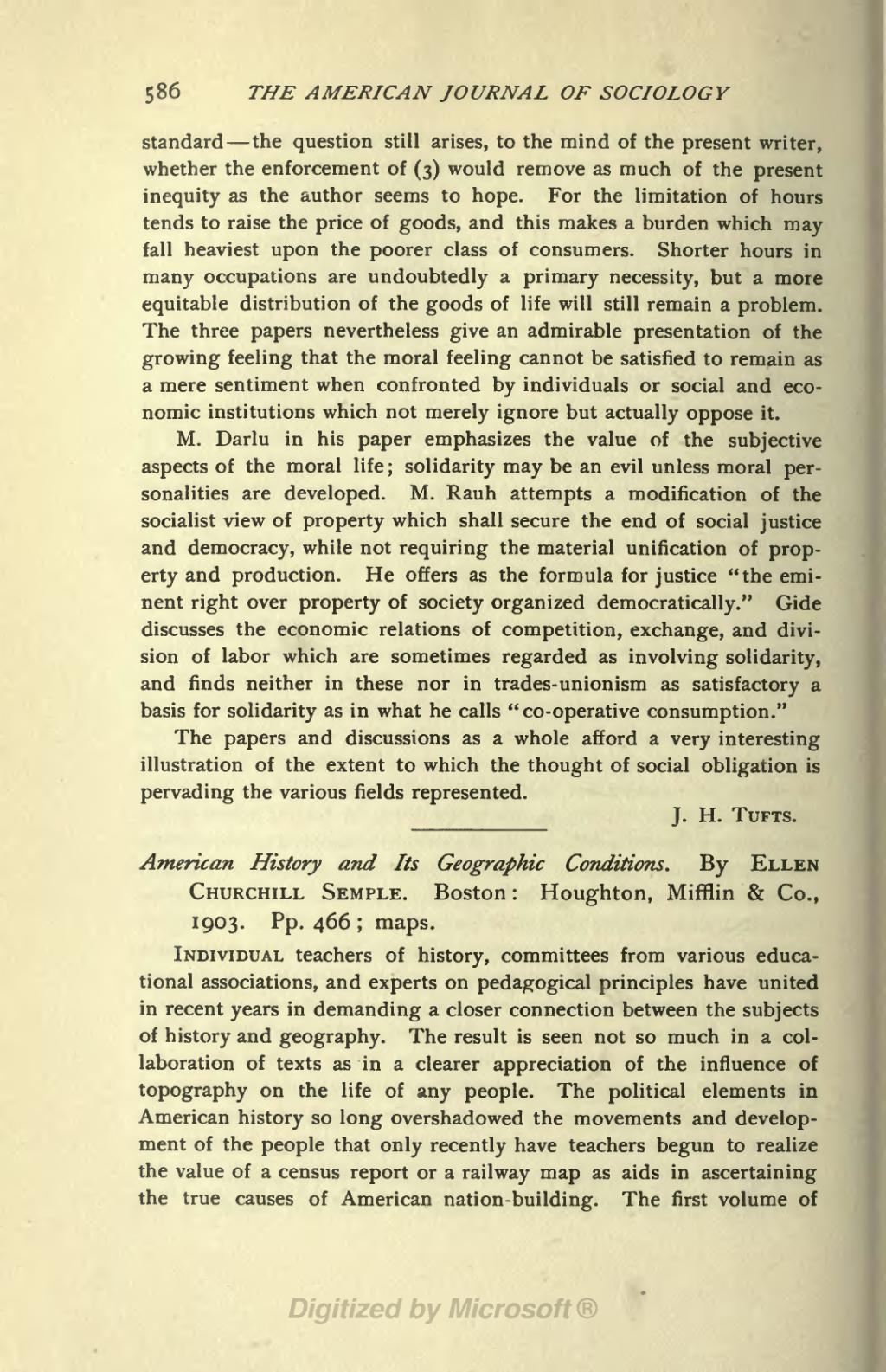586 THE AMERICAN JOURNAL OF SOCIOLOGY
standard the question still arises, to the mind of the present writer, whether the enforcement of (3) would remove as much of the present inequity as the author seems to hope. For the limitation of hours tends to raise the price of goods, and this makes a burden which may fall heaviest upon the poorer class of consumers. Shorter hours in many occupations are undoubtedly a primary necessity, but a more equitable distribution of the goods of life will still remain a problem. The three papers nevertheless give an admirable presentation of the growing feeling that the moral feeling cannot be satisfied to remain as a mere sentiment when confronted by individuals or social and eco- nomic institutions which not merely ignore but actually oppose it.
M. Darlu in his paper emphasizes the value of the subjective aspects of the moral life ; solidarity may be an evil unless moral per- sonalities are developed. M. Rauh attempts a modification of the socialist view of property which shall secure the end of social justice and democracy, while not requiring the material unification of prop- erty and production. He offers as the formula for justice "the emi- nent right over property of society organized democratically." Gide discusses the economic relations of competition, exchange, and divi- sion of labor which are sometimes regarded as involving solidarity, and finds neither in these nor in trades-unionism as satisfactory a basis for solidarity as in what he calls " co-operative consumption."
The papers and discussions as a whole afford a very interesting illustration of the extent to which the thought of social obligation is pervading the various fields represented.
J. H. TUFTS.
American History and Its Geographic Conditions. By ELLEN CHURCHILL SEMPLE. Boston : Houghton, Mifflin & Co., 1903. Pp. 466 ; maps.
INDIVIDUAL teachers of history, committees from various educa- tional associations, and experts on pedagogical principles have united in recent years in demanding a closer connection between the subjects of history and geography. The result is seen not so much in a col- laboration of texts as in a clearer appreciation of the influence of topography on the life of any people. The political elements in American history so long overshadowed the movements and develop- ment of the people that only recently have teachers begun to realize the value of a census report or a railway map as aids in ascertaining the true causes of American nation-building. The first volume of
